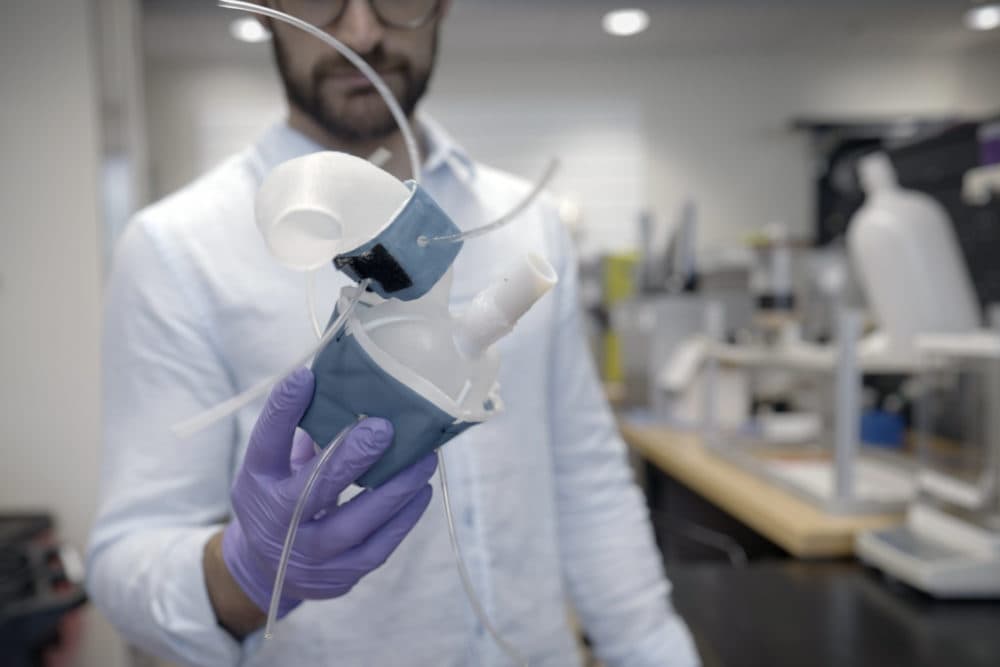Advertisement
MIT's 3D-printed hearts could pump new life into customized treatments

Engineers can now print three-dimensional replicas of a human heart custom-designed to look and act like an individual patient’s heart.
The goal is to provide realistic models so that doctors, researchers and medical device manufacturers can use them in testing therapies for different types of heart disease, said Ellen Roche, a mechanical engineering professor at MIT whose lab helped develop these heart replicas.
“In patients with heart failure, they have very different anatomy,” she said. Each heart is unique, and there’s even more variation for patients with heart failure.
The process of creating a customized, replica starts with taking detailed medical images of an individual's heart. Those images are then converted into a computer model, which is sent to a 3D printer that produces a soft, flexible shell. Roche’s team then adds sleeves — similar to blood pressure cuffs — that can be inflated and deflated to mimic the contraction of the heart. The results were published today in Science Robotics.
“Our heart sleeve can recreate the function of patients in a more accurate way than current pumps, which are usually rigid and bulky,” said Luca Rosalia, a graduate student in the MIT-Harvard Program in Health Sciences and Technology who helped develop this robotic heart.
One day, doctors could use this type of robotic heart for patients with aortic stenosis, a condition in which the aortic valve narrows and, thus, forces the heart to work harder to pump blood throughout the body, according to Rosalia and Roche. This condition affects 1.5 million people in the United States. Usually, aortic stenosis is treated through surgically implanting a synthetic valve. These researchers imagine a future in which doctors could first create a replica of a patient’s heart to test out the different valve options to see which one works best for that particular patient before implanting it.
“Up to this point, the 3D printing technologies have left a little bit to be desired,” said Jon Passeri, director of clinical operations for the Echocardiography Laboratory at Mass General Hospital. “It’s very difficult to replicate the pliability of the different tissues that are involved and the calcification that occurs on the valve in a way that is highly accurate.”
Advertisement
But Passeri — who was not involved in the 3D heart replica research — called the new technology “fascinating.”
“It's more accurate, it can be produced — it seems — a little bit more rapidly and so that makes it appealing for clinical use,” Passeri said. However, he warned, “it's probably going to be a while” before these models are used in a clinical setting.
Rosalia agreed. While these robotic hearts could be used in the medical device industry and in laboratories within a few years, his guess is that they won’t be used in direct patient care for at least five to 10 years.
“For the system to be used in the clinic, [the replica heart] would have to be manufactured and built and tested within like 24 or 36 hours. And so there are still advances to be made in the 3D printing technology,” Rosalia said.


